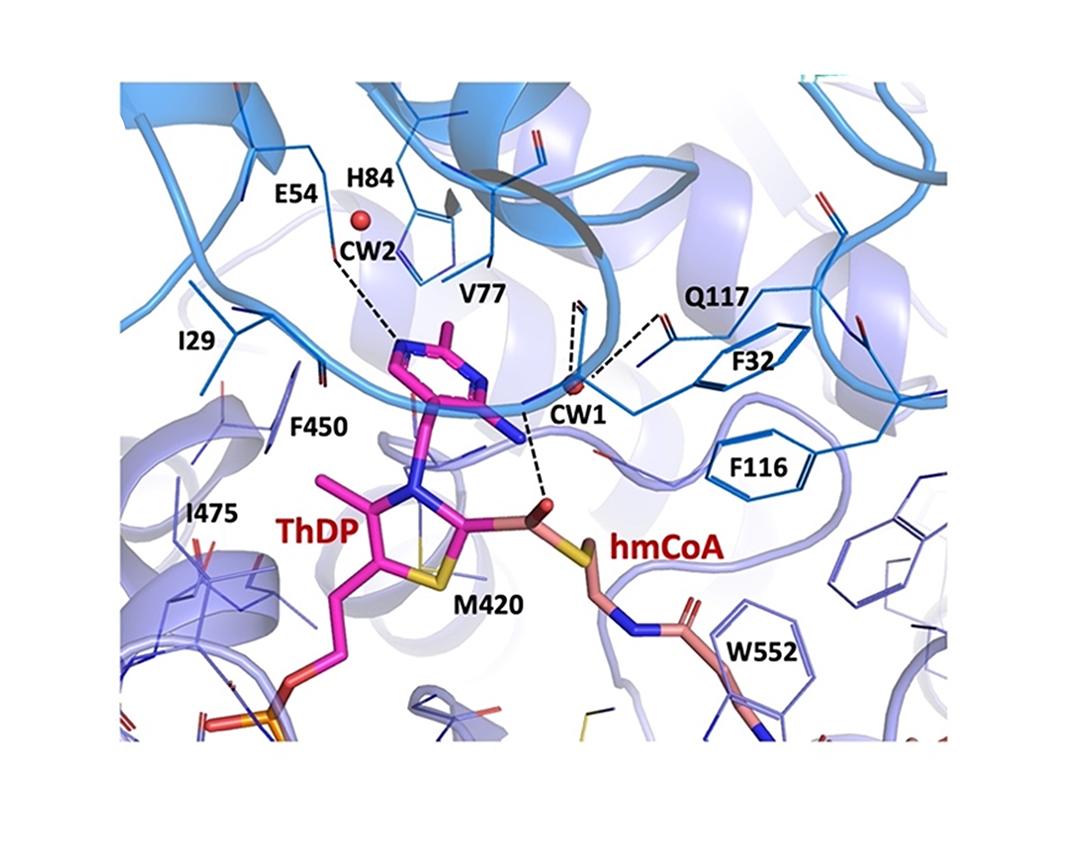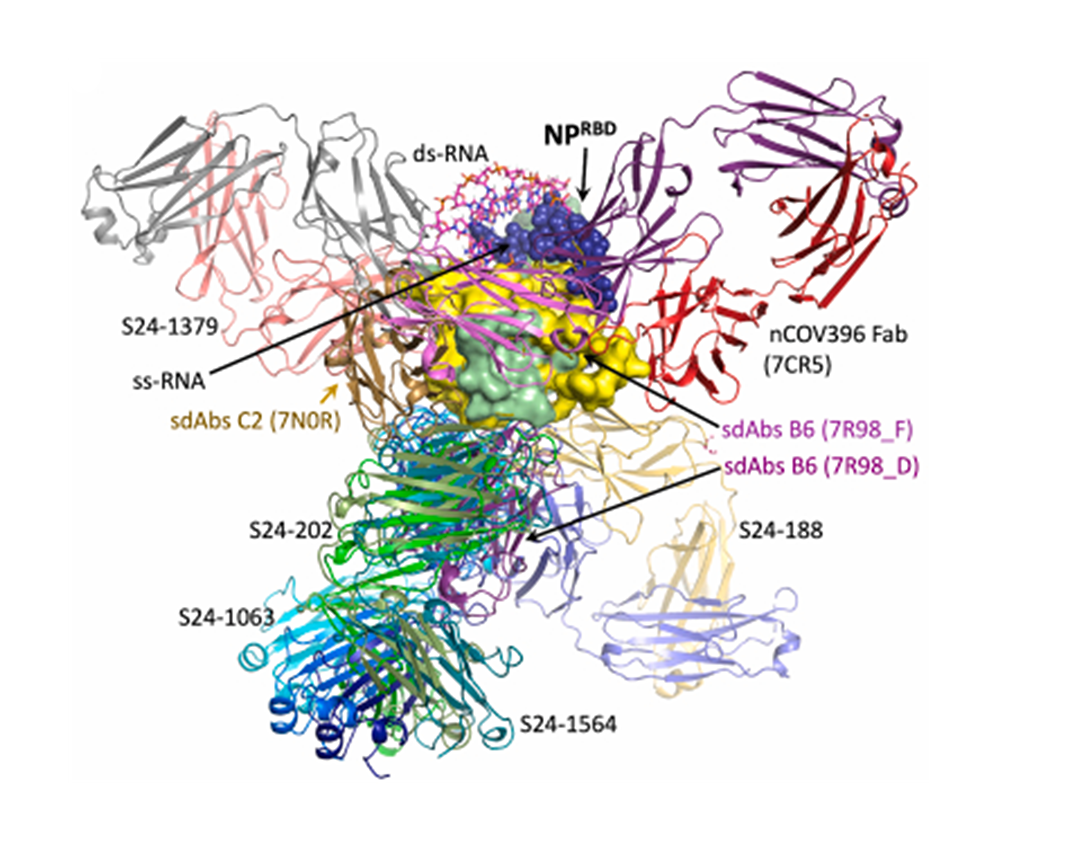eBERlight is a U.S. Department of Energy (DOE)’s Office of Science Biological and Environmental Research (BER) resource operating at the Advanced Photon Source. The program provides access and user support for several x-ray-based tools for research in biological, geological, geochemical, and environmental sciences, such as:
- Macromolecular Crystallography (MX)
- X-ray Microscopy (X-fluorescence microscopy, XFM, and ptychography)
- X-ray Full-Field Imaging (Computed Tomography, CT)
- X-ray scattering (Small/Wide-Angle X-ray Scattering, SAXS/WAXS)
- X-ray absorption spectroscopy (XAS)
Leveraging additional resources available at Argonne National Laboratory for sample preparation and data analysis, eBERlight creates a comprehensive ecosystem to meet the needs of complex environmental and biological research projects, and to take full advantage of the upgraded light source.
For a look at some of the problems eBERlight can help solve, check out the fact sheet and video below.
Results in this report are derived from work performed through the eBERlight program, funded by the U.S. Department of Energy, Office of Biological and Environmental Research at the Advanced Photon Source, a U.S. DOE Office of Science User Facility, supported by the U.S. DOE, Office of Basic Energy Sciences, under Contract No. DE-AC02-06CH11357.
eBERlight is working with the Facilities Integrating Collaborations for User Science (FICUS) program to provide researchers with access to world-class resources at Environmental Molecular Sciences Laboratory (EMSL), Joint Genome Institute (JGI), the National Ecological Observatory Network (NEON), the Bio-SANS beamline at the High Flux Isotope Reactor (HFIR) through the Center for Structural Molecular Biology (CSMB), and the Advanced Photon Source (APS). FICUS proposal calls are announced annually. Visit the Proposal Calls page for more information.
The eBERlight 101: Application of X-ray methods in biological and environmental research workshop was held on November 19-21, 2024, at Argonne National Laboratory. The workshop was dedicated to the scientific community engaging in bioenvironmental research focusing on the Department of Energy mission. Participants studied X-ray fluorescence microscopy and X-ray tomography techniques and were introduced to data analysis. Additional information about upcoming workshops will be available soon. Stay tuned for updates!
Subscribe to the eBERlight mailing list to get updates about beamline activities, deadlines, and more here: [email protected]
Scientists working with eBERlight play a pivotal role in pioneering innovative scientific methodologies. Taking benefit of Argonne’s educational programs, the laboratory offers a variety of educational and outreach programs to cultivate the next generation of scientists and engineers. These programs introduce students, early-career scientists, and engineers to mission-driven, high-impact research. There are a variety of research opportunities to work alongside scientific mentors at the laboratory in a paid internship appointment. Students and graduates are encouraged to apply online, or contact eBERlight for opportunities available.
Graduate students currently pursuing Ph.D. degrees in areas of physics, chemistry, material sciences, biology (non-medical), mathematics, engineering, computer or computational sciences, or specific areas of environmental sciences that are aligned with the mission of the Office of Science are eligible to apply for the supplemental research awards provided by the Office of Science Graduate Student Research (SCGSR) program. Learn how to apply at SCGSR.
Science Highlights

Youngchang Kim, Seung Hwan Lee, Priyanka Gade, Maren Nattermann, Natalia Maltseva, Michael Endres, Jing Chen, Philipp Wichmann, Yang Hu, Daniel G. Marchal, Yasuo Yoshikuni, Tobias J. Erb, Ramon Gonzalez, Karolina Michalska, Andrzej Joachimiak, "Revealing reaction intermediates in one-carbon elongation by thiamine diphosphate/CoA-dependent enzyme family," Commun. Chem. 7, 160 (2024). DOI: 10.1038/s42004-024-01242-y

Youngchang Kim, Natalia Maltseva, Christine Tesar, Robert Jedrzejczak, Michael Endres, Heng Ma, Haley L. Dugan, Christopher T. Stamper, Changsoo Chang, Lei Li, Siriruk Changrob, Nai-Ying Zheng, Min Huang, Arvind Ramanathan, Patrick Wilson, Karolina Michalska, Andrzej Joachimiak, "Epitopes recognition of SARS-CoV-2 nucleocapsid RNA binding domain by human monoclonal antibodies," iScience 27 (2), 108976 (2024). DOI: 10.1016/j.isci.2024.108976
The APS Publications database is the official source for listing APS-related publications. This includes journal articles, conference proceedings and papers, dissertations, books, book chapters, technical reports, abstracts, awards, invited talks, patents, magazine articles, and newsletters. Notify eBERlight or the APS of publications to include.
Erin C. Berns-Herrboldt, Teri A. OMeara, Elizabeth M. Herndon, Benjamin N. Sulman, Baohua Gu, Dawn M. Klingeman, Kenneth A. Lowe, David E. Graham, "Dynamic soil columns simulate Arctic redox biogeochemistry and carbon release during changes in water saturation," Sci. Rep. 15, 3093 (2025). DOI: 10.1038/s41598-024-83556-4 (9-BM)
Wenhua Zuo, Rui Liu, Jiyu Cai, Yonggang Hu, Manar Almazrouei, Xiangsi Liu, Tony Cui, Xin Jia, Emory Apodaca, Jakob Alami, Zonghai Chen, Tianyi Li, Wenqian Xu, Xianghui Xiao, Dilworth Parkinson, Yong Yang, Gui-Liang Xu, Khalil Amine, "Nondestructive Analysis of Commercial Batteries," Chem. Rev. 125 (1), 369-444 (2025). DOI: 10.1021/acs.chemrev.4c00566 (12-ID)
Shichao Ding, Jordan Alysia Barr, Zhaoyuan Lyu, Fangyu Zhang, Maoyu Wang, Peter Tieu, Xin Li, Mark H. Engelhard, Zhenxing Feng, Scott P. Beckman, Xiaoqing Pan, Jin-Cheng Li, Dan Du, Yuehe Lin, "Effect of Phosphorus Modulation in Iron Single-Atom Catalysts for Peroxidase Mimicking," Adv. Mater. 36 (10), 2209633 (2024). DOI: 10.1002/adma.202209633 (9-BM)
Magdalena Broda, Joseph E. Jakes, Luxi Li, Olga A. Antipova, Evan R. Maxey, Qiaoling Jin, "Conservation of model degraded pine wood with selected organosilicons studied by XFM and nanoindentation," Wood Sci. Technol. 58, 649-675 (2024). DOI: 10.1007/s00226-024-01533-6 (2-ID, 8-BM)
Youngchang Kim, Seung Hwan Lee, Priyanka Gade, Maren Nattermann, Natalia Maltseva, Michael Endres, Jing Chen, Philipp Wichmann, Yang Hu, Daniel G. Marchal, Yasuo Yoshikuni, Tobias J. Erb, Ramon Gonzalez, Karolina Michalska, Andrzej Joachimiak, "Revealing reaction intermediates in one-carbon elongation by thiamine diphosphate/CoA-dependent enzyme family," Commun. Chem. 7, 160 (2024). DOI: 10.1038/s42004-024-01242-y (Staff)
Kemin Tan, Yuk-Ching Tse-Dinh, "Variation of Structure and Cellular Functions of Type IA Topoisomerases across the Tree of Life," Cell 13 (6), 553 (2024). DOI: 10.3390/cells13060553 (Staff)
Chun Gui, Edward Kalkreuter, Yu-Chen Liu, Gengnan Li, Andrew D. Steele, Dong Yang, Changsoo Chang, Ben Shen, "Cofactorless oxygenases guide anthraquinone-fused enediyne biosynthesis," Nat. Chem. Biol. 20, 243-250 (2024). DOI: 10.1038/s41589-023-01476-2 (Staff)
Timothy A. Klein, Prakhar Y. Shah, Polyniki Gkragkopoulou, Dirk W. Grebenc, Youngchang Kim, John C. Whitney, "Structure of a tripartite protein complex that targets toxins to the type VII secretion system," Proc. Natl. Acad. Sci. USA 121nbsp;(3), e2312455121 (2024). DOI: 10.1073/pnas.2312455121 (Staff)
Stephanie M. Thibert, Deseree J. Reid, Jesse W. Wilson, Rohith Varikoti, Natalia Maltseva, Katherine J. Schultz, Agustin Kruel, Gyorgy Babnigg, Andrzej Joachimiak, Neeraj Kumar, Mowei Zhou, "Native Mass Spectrometry Dissects the Structural Dynamics of an Allosteric Heterodimer of SARS-CoV-2 Nonstructural Proteins," J. Am. Soc. Mass. Spectrom. 35 (5), 912-921 (2024). DOI: 10.1021/jasms.3c00453 (Staff)




